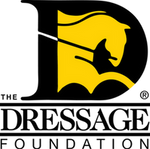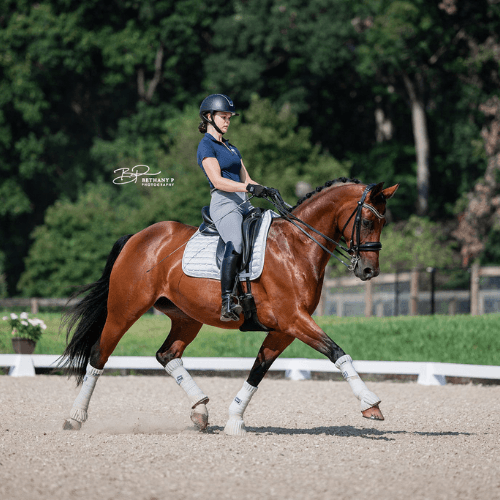
Genevieve Oliver credit Bethany P Photography
Day One at the CHIO Aachen:
When I first walked onto the showgrounds, I was in awe of the quality of the grounds and the size of the facility. The arenas are beautiful, of course, but every detail is maintained to the highest standard. The walking paths are lined with flowers and fountains, and there are endless rows of shops, food tents, and #selfie spots. There’s truly something for everyone, and the number of spectators far surpassed anything I’ve ever seen in the U.S.
Today we met with Dr. Johan Lenz, the Swedish team veterinarian; past Team USA Olympic member, Ali Brock; Markus Scharmann with the German Equestrian Federation; and Astrid Appels from Eurodressage.
The biggest educational takeaway from these conversations was the discussion about the future of the sport. We asked each of them for their thoughts, and it was incredibly interesting to hear their different perspectives. Both Ali and Dr. Lenz emphasized the importance of riding horses that are relaxed and willing partners. Astrid stressed how critical it is for the sport to appear harmonious to the outside world. Markus spoke about the need for riders to shift their mindset, accepting mistakes and committing to continuous improvement.
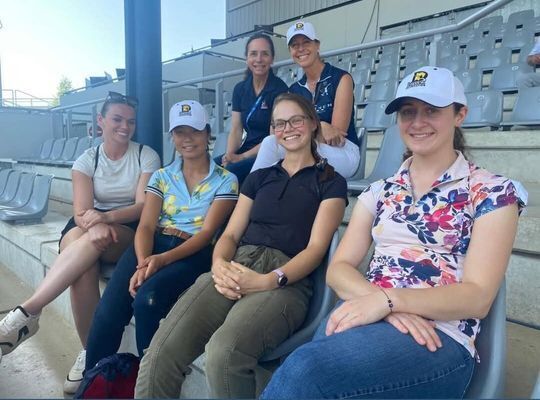
Meeting with Olympian Ali Brock
Day Two:
Today, after six hours of watching some of the best riders in the world compete in the Grand Prix 5* Nations Cup, we had the opportunity to meet with some incredible people from our own country, including Laura Roberts and Christine Traurig.
Laura spoke with us about her role at USEF and as a Chef d’Équipe. It was incredibly valuable to learn about the programs she’s involved in and to hear about her current initiatives, especially her efforts to increase spectator interest in our sport. In Aachen, it’s inspiring to see how many people are passionate about horses and dressage. If we could create even a fraction of that atmosphere in the U.S., it would do so much to help our sport thrive.
Speaking with Christine was a dream come true for me. I’ve admired her for many years, and being able to talk with her about everything from breeding and young horses to the training scale was absolutely incredible. Here are a few key takeaways that really stuck with me:
- First and foremost, riding dressage is not about inventing anything new. Every answer comes back to the classical training principles that have guided masters for generations. Our job is to learn how to read the horse and apply those principles in every situation.
- One of Christine’s core training philosophies is: “Tempo to contact within suppleness and relaxation.” While it takes time to truly unpack these terms, the essence is about a horse that willingly moves forward into a contact they seek—while remaining supple and relaxed. That willingness and harmony is the foundation of our sport, and it’s what we should strive to find or develop in every training session.
We also asked her what she looks for in a young horse prospect. Many of the professionals we’ve met have emphasized the importance of U.S. trainers being able to identify and develop young horses all the way to FEI, to support the future of American dressage. Christine spoke in depth about the importance of conformation, temperament, and breeding when selecting a young horse. They must be built to do the job so that we’re not asking them to perform tasks their bodies aren’t suited for. They should also be focused, willing, and possess a strong work ethic. And if we’re purchasing an unproven youngster, following bloodlines can give us insight into their potential.
As I mentioned in my last journal post, we’ve asked everyone we’ve met about the future of our sport. While we covered many topics, my biggest takeaway is the vital importance of making dressage look harmonious, especially to those who may not fully understand what they’re watching. The bond between horse and rider must be prioritized. Those who can make the work look effortless should be celebrated over those simply displaying large and expressive movement. While the bling and flash can be beautiful and entertaining, they should never take precedence over harmony and relaxation. I believe this is a beautiful vision for the future of our sport—and one that many of us wholeheartedly support.
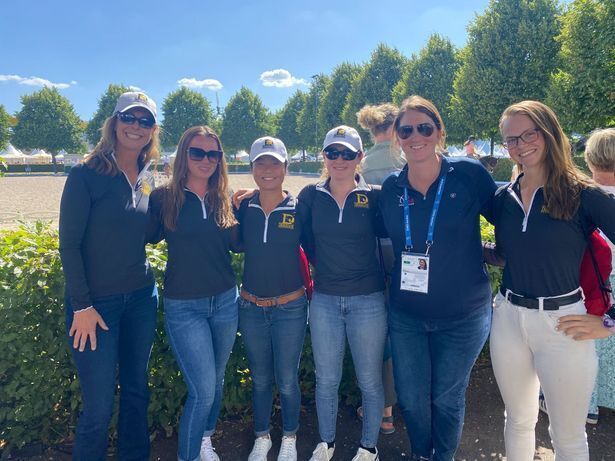
With Laura Roberts
Day Three:
Friday at Aachen was a quiet day for dressage, as the eventing riders took over the dressage stadium for most of the morning. However, there was no rest for the TDF crew! We met with six amazing individuals before settling in to watch an incredible 4* Grand Prix Special.
We began the day with Tinne Vilhelmson-Silfvén, a seven-time Olympian for the Swedish team. Then we met with FEI judge Janet Foy and Margaret Duprey of Cherry Knoll Farm, a generous sponsor of this program and horse sport at large. Later, we met the incredible German rider and trainer Michael Klimke. We wrapped up our day with British team rider Becky Moody, who recently placed 8th individually at the Paris Olympics.
Several key themes emerged in these conversations, which I’ll elaborate on in this entry. One of the most powerful was the importance of our love for the sport and these amazing animals—not just that the love exists, but that it drives us to care for our horses and prioritize their well-being every day. Our passion for the sport and our horses should always come before any ribbon or award.
This was reflected in stories about top riders taking part in their horses’ daily care. While some may assume that elite riders only train and compete, many remain deeply involved in their horses’ routine management. Tinne emphasized how important this is, especially when traveling to shows—knowing your horse well helps you recognize if something feels “off.” Michael shared a particularly inspiring thought: you can’t control what happens in the arena or how you’re judged, but you can control how you treat your horses. That mindset is something every rider and trainer can benefit from.
Another key takeaway was the responsibility we have to show our love and respect for the horse to the outside world. It's essential that we share the deep emotion behind the art of dressage. We, of course, love this sport—but so do our horses. Becky highlighted that these horses are bred for this job and truly enjoy their work. In today’s climate, it’s more important than ever to spotlight not only correct, harmonious riding but also the fulfilling lives these horses lead and the special bonds they share with their riders. What happens behind the scenes is just as meaningful as what is presented in the ring.
Communication was also a major theme. Of course, learning to communicate with our horses is fundamental, but communication among members of our sport is just as vital. Many of the individuals we spoke with stressed this point—whether it’s being transparent with sponsors and owners about plans and progress, or learning to communicate effectively with students. It’s also critical for professionals across the industry—judges, trainers, riders, and more—to come together to discuss the future of dressage. We must become a united team working to protect and preserve the art form we all cherish.
Finally, we explored the importance of education. Michael shared that he had to study classical dressage texts extensively before he was even allowed to ride. Tinne explained that while horses and breeding have evolved over the decades, the classical ideals of dressage remain unchanged. Learning these principles can help riders at any level better understand what they’re feeling in the saddle. We were lucky enough to read Beth Baumert’s book, which presents these principles beautifully—it has helped my riding and teaching tremendously.
The professionals we met also emphasized the importance of learning from everything and everyone. Whether it’s riding a test, taking lessons with different instructors, or simply observing others, every experience is a chance to grow. Mistakes, too, are part of the learning process—they are not failures, but opportunities. This is the journey we all take on the road to success.
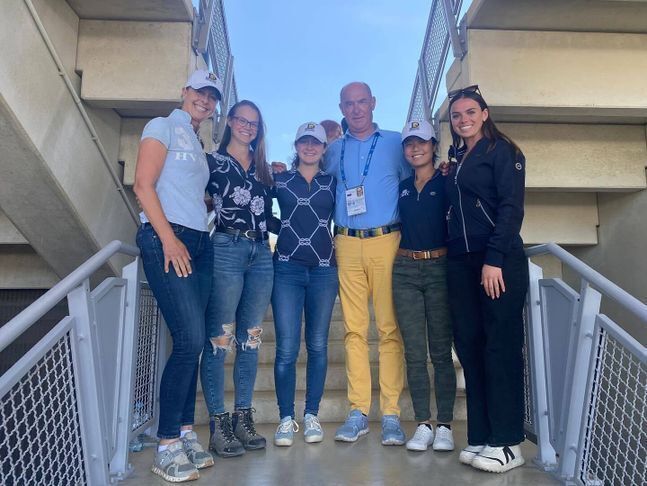
With Michael Klimke
Day Four:
Today was a busy day for dressage at Aachen. The morning began with the 5* Grand Prix Special, leading into the Junior Freestyles, Intermediare 1, and finishing late in the night with the 4* Grand Prix Freestyles under the lights. Around this busy schedule, the TDF crew had two interviews. The first was with US Team rider Kasey Perry-Glass, who had just performed an amazing test in the 5* GP Special. The second was with my personal idol, Olympian Dinja Van Liere. I will discuss in this entry some of the most important things I learned from these incredible riders.
The thing that I found most inspiring was their optimistic attitude about the future of the sport. While many in the industry can feel negatively and pessimistically about the changes that are being made, both of these top riders saw it as a benefit and believe that it has already been made better. This show reflected some amazing horses and riders and really presented the sport in a harmonious way. Kasey and Dinja both believe in prioritizing harmony and believe that the sport is succeeding at getting better through that emphasis. Both this show and these riders have inspired my optimism as well, and helped me believe that this sport may change a little, but we can make the best of its new direction.
I also wanted to mention what these top horse trainers prioritize in their respective training at home. Kasey believes that the key to success is trusting yourself. It is critical to be confident enough in yourself and your education that you can fall back on your own training when something goes wrong. You also must build up your team in the right way and surround yourself with positive and uplifting people. Dinja discussed how she wants to be able to trust her aids. It is critical that the horse is always correctly sensitive to both her “go” and “whoa” aids, even when she is in a movement. If she starts a movement and feels the horse goes behind her aids, she abandons the pattern and renews her aids. I thought that these two things worked incredibly well together; you must trust your training, and in your training you must trust your aids.
We also discussed with both of them the topic of work-life balance. While they are both of different situations and parts of their careers, they both find ways to encourage balance in their lives. Kasey sets aside time for her family, including her young child, that helps keep her motivated and happy when she is at the barn. Dinja finds time to do things she enjoys; for instance, she works out almost every morning before going to the barn and starting her day. These conversations remind me that even if you are at the top of the sport, you still must find ways to keep yourself energized and happy in this way of life.
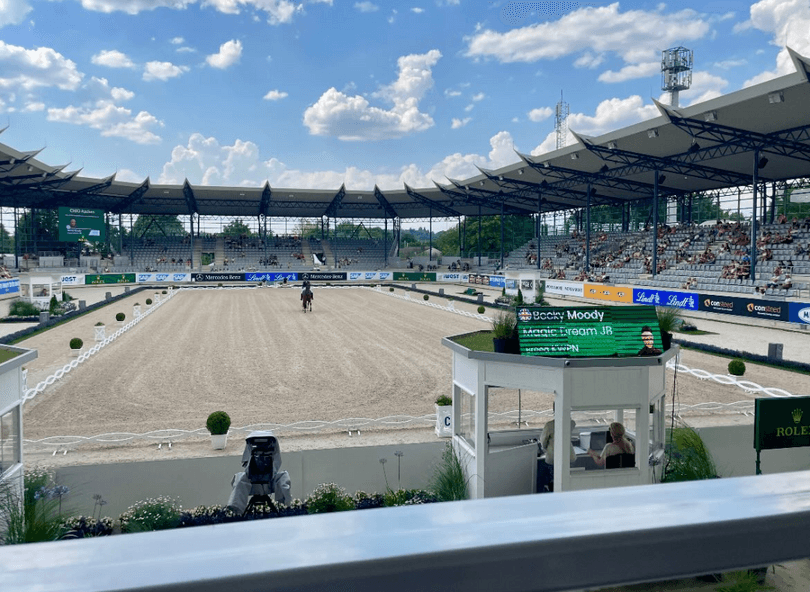
Dressage at Aachen
Day Five:
The most impactful lesson that I learned on this trip was to listen to the horse. This came up in many different conversations, and in many different contexts, but I do think that it is one of the most crucial things for professional riders to constantly consider. For instance, one of the first things that Ingrid Klimke communicated with us in our discussion was to listen to the horse in everyday training. They are not machines, they are individuals like us, and so they come out a bit different every day. While it is important to have a plan, we must also feel comfortable changing the plan as we go based on how the horse feels on a particular day.
It is also important that, when we discuss the future of our sport, we focus on making it better for the horse. Dinja Van Liere, for example, mentioned the importance of not blindly listening to people who do not understand or interact with horses when we look to the future. We must do research and understand the animals better to do right by them as we move forward.
I think the main goal I have moving forward is to create my own “pipeline.” So many of the professional trainers that we had the pleasure of talking to had horses of all ages coming up in their barn. Whether it was the ones that they bought as youngsters themselves, or whether their sponsor supports their upcoming development, they know that having multiple horses coming along is crucial in their ability to have the success that they want to achieve. I hope to develop my own horses like this, and through that perhaps learn how to ride and train the way that these top people do.
Finally, if I could thank one horse and rider combination from this week, it would be Justin Verboomen and his stallion, Zonik Plus. Of course, the entire dressage world is already raving about this pair, so it is no surprise. But I think it is such a perfect harmonious partnership to try to shoot for in my own riding. The story of this pair is exactly what this sport needs to believe: that we all can achieve big things if we stick to our training, believe in ourselves and our horses, and use our determination to stick through the rough patches. This pair definitely gives me hope that anyone who works hard and educates themselves correctly can get to the top of this sport.
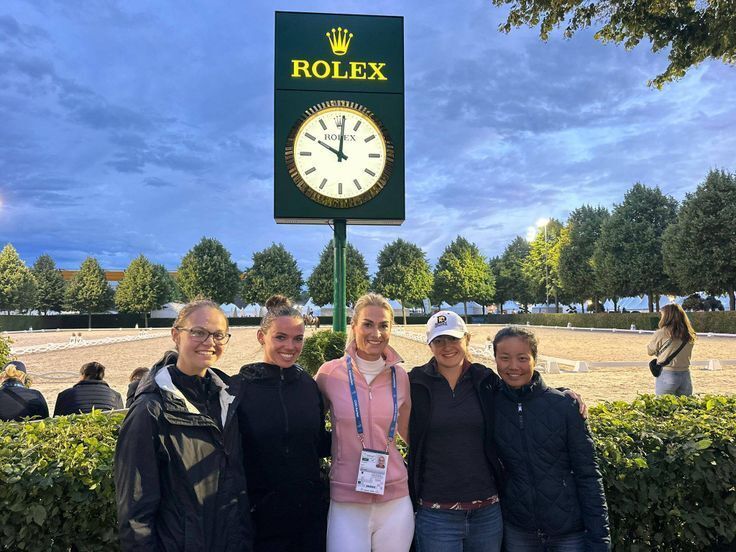
Meeting Dutch Team rider, Dinja van Liere
